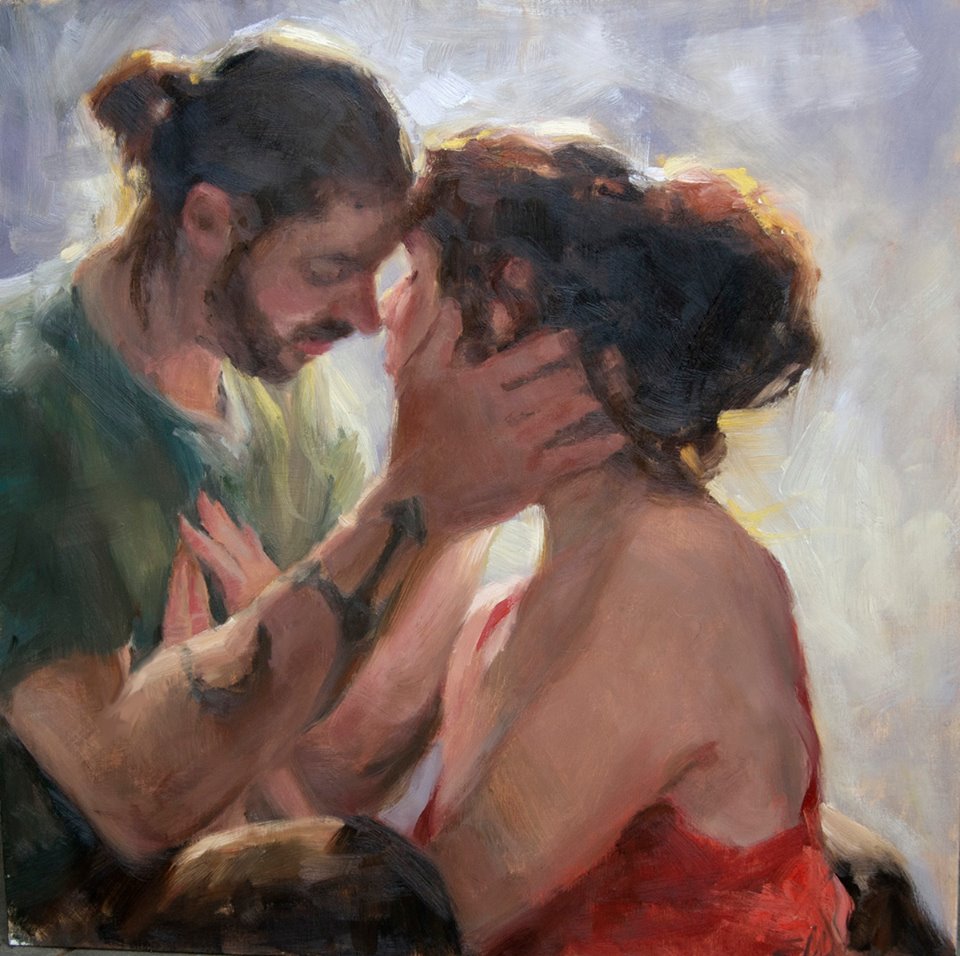As a young woman, her B.A. in fine arts from the University of Texas at Tyler took a backseat to the corporate world for many years: advertising exec; graphic designer and art director of her own company; and later corporate and executive recruiter. Not surprisingly, she was recognized in national competitions for her print design and annual reports, but shortly after her move to Denver in 1994, the satisfied extrovert began to hear from the starving artist. She says she “felt like her soul was drying up”. An oil-painting class at the Art Students’ League of Denver rained water on that desert ground.
Home » Tutti i post

Paintings of Notre-Dame de Paris
Victor Hugo🎨, in The Hunchback of Notre-Dame:
"A vast symphony in stone, so to speak; the colossal work of one man and one people, all together one and complex, like the Iliads and the Romanceros, whose sister it is; prodigious product of the grouping together of all the forces of an epoch, where, upon each stone, one sees the fancy of the workman disciplined by the genius of the artist start forth in a hundred fashions; a sort of human creation, in a word, powerful and fecund as the divine creation of which it seems to have stolen the double character - ariety, eternity".
"A vast symphony in stone, so to speak; the colossal work of one man and one people, all together one and complex, like the Iliads and the Romanceros, whose sister it is; prodigious product of the grouping together of all the forces of an epoch, where, upon each stone, one sees the fancy of the workman disciplined by the genius of the artist start forth in a hundred fashions; a sort of human creation, in a word, powerful and fecund as the divine creation of which it seems to have stolen the double character - ariety, eternity".
Sylvius Paoletti (1864-1921) Notre Dame de Paris, 1907

Donato Creti | Astronomical Observations, 1711
Donato Creti (24 February 1671 - 31 January 1749) was an Italian painter🎨 of the Rococo period, active mostly in Bologna.
The series of Astronomical observations was commissioned in 1711 by the Bolognese count Luigi Marsili.
He had the artist Donato Creti paint all the planets in as many small pictures and made a gift of these to the Pope to convince him of the importance for the Holy Church of an astronomical observatory.
The gift made it possible to achieve his goal, because with the support of Clement XI (pontiff from 1700-1721) the first public astronomical observatory was opened in Bologna a short time later.
Donato Creti | Osservazioni Astronomiche - Marte

Victor Hugo | Painting
Victor Marie Hugo (1802-1885) was not only one of France's greatest poet, novelist and dramatist, but also a prolific artist, painter, watercolourist, draughtsman and caricaturist.
Victor Hugo produced more than 4000 drawings. Originally pursued as a casual hobby, drawing became more important to Hugo shortly before his exile, when he made the decision to stop writing in order to devote himself to politics. Drawing became his exclusive creative outlet during the period 1848-1851.


Henry John Stock | Pre-Raphaelite painter
Born in Soho, London, Henry John Stock (1853-1930) made a somewhat unusual start as an artist by going blind in childhood but recovered his sight on going to live at Beaulieu in the New Forest. Fully recovered, he studied at the St. Martin’s School of Art and at the Royal Academy Schools and was befriended by the engraver W. J. Linton, who, perhaps significantly, had engraved the illustrations to Gilchrist’s Life of William Blake🎨, 1863.
He exhibited at the Royal Academy between 1874-1910 and also at the Royal Institute of Painters in Watercolors, becoming a member in 1881, as well as at commercial galleries such as the Fine Arts Society.

Jean Mannheim | Impressionist painter
Jean Mannheim (November 18, 1863 - September 6, 1945) was a German-born American artist and educator, known for his California Impressionist paintings. He was active in Decatur, Illinois and Pasadena, California.
Jean Mannheim (1861-1945) grew up in Kreuznach, Germany.
At age seventeen, he left home and began to journey throughout Germany making a living by binding books and painting portraits on the side. Shortly after being drafted into the German army, Mannheim defected and traveled to Paris to learn English and began his art studies.
From 1884-1908, Mannheim settled in the US, calling both Decatur, Illinois and Denver, Colorado home at times, while continuing to travel back to Paris for his art studies at respected Paris schools, including the Academie Julian.
During this time he married Eunice Drennan and the couple had two daughters, who were often portrayed in his work over the years.

Sculptures in Notre-Dame de Paris
Notre-Dame de Paris🎨 - Stone, copper and bronze statues, including statues of the twelve Apostles that surrounded the base of the spire, had been removed from the site days prior to the 2019 fire as part of the renovations.
Adam - West facade

Elisabeth Vigée Le Brun | Rococo painter
Elisabeth Louise Vigée-Le Brun (1755-1842) was one of the most successful portraitists of 18th century France, gaining renowned in particular for her self-portraits and depictions of courtly women, Queen Marie Antoinette most famously.
Born in Paris as the eldest child of the portraitist Louis Vigée (1715-1767) and Jeanne Maissin, Vigée Le Brun was trained by her father from an early age.
She succeeded in gaining entrance to the Académie de Saint-Luc at the age of just nineteen, a remarkable accomplishment for a woman at the time.
Iscriviti a:
Post (Atom)

